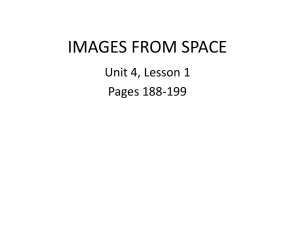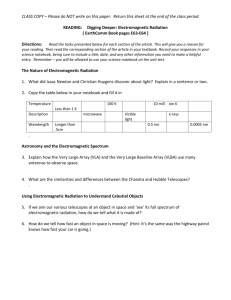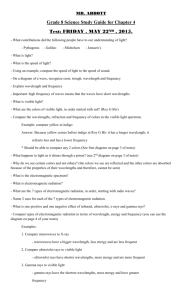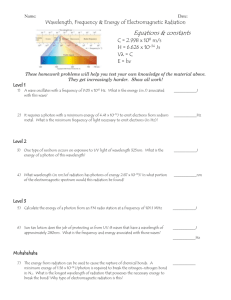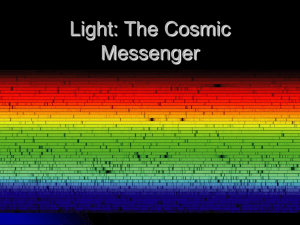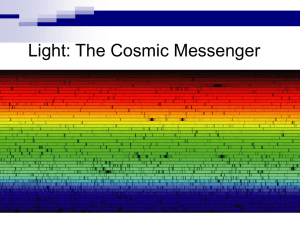27.1 – Tools of Astronomy
advertisement
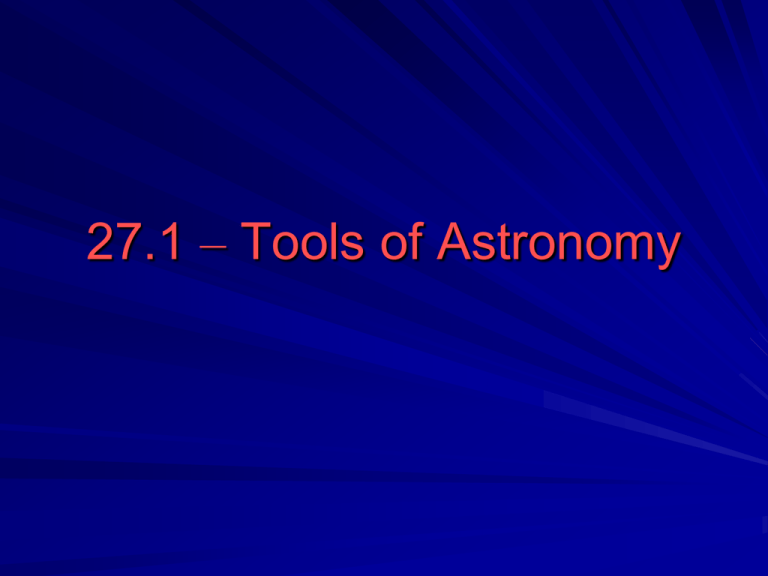
27.1 – Tools of Astronomy Radiation Radiation emitted or reflected by distant objects allows scientists to study the universe Electromagnetic Radiation = the radiation from bodies throughout the universe – This includes visible light, infrared and ultraviolet radiation, radio waves, microwaves, X rays, and gamma rays. Electromagnetic Spectrum Consists of all types of electromagnetic radiation arranged according to wavelength and frequency Electromagnetic radiation Classified by – Wavelength = the distance between peaks on a wave – Frequency = the number of waves or oscillations that pass a given point per second Frequency is related to wavelength by the mathematical relationship c = λf – where c is the speed of light (3.0 × 108 m/s), – λ is the wavelength, and f is the frequency. Telescopes Provide the ability to observe wavelengths beyond what the human eye can detect Collect electromagnetic radiation from distant objects and focus it so that an image of the object can be recorded Can also collect light over periods of minutes or hours Telescopes Refracting telescopes use lenses to focus visible light. Reflecting telescopes use mirrors to focus visible light. Telescopes The goal is to bring as much electromagnetic radiation as possible into focus – Infrared and ultraviolet radiation focused with mirrors – X rays cannot be focused by normal mirrors, but rather with special designs – Gamma rays cannot be focused, telescopes can only determine only the direction from which the rays come Space-Based Astronomy Space-based telescopes allow astronomers to study radiation that would be blurred by our atmosphere – The Hubble Space Telescope was designed to obtain sharp visible-light images without atmospheric interference and to make observations in infrared and ultraviolet wavelengths Spacecraft Make observations from above Earth’s atmosphere and can also be sent directly to the bodies being observed – Robotic probes are spacecraft that can make close-up observations and sometimes land to collect information directly Human spaceflight The space shuttle provides an environment for scientists to study the effects of weightlessness on humans, plants, the growth of crystals, and other phenomena – Because shuttle missions last a maximum of just 17 days, long-term effects must be studied in space stations Spinoff technology Many technologies that were originally developed for use in space programs are now used by people around the world More than 1400 different NASA technologies, such as cordless tools, have been passed on to commercial industries for common use In-Class Assignment/Homework Finish Vocabulary Crossword Puzzle Review Questions pg. 769 #1-5


